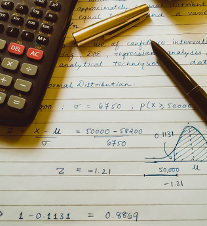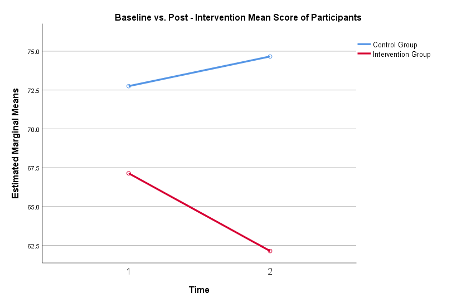Let’s talk about statistics anxiety!

By Cleidi Hearn
Cleidi commenced her BA Applied Psychology in 2018, and with the support of UCC and the Student Inc. programme has created Sunny Numbers which is an EdTech startup specialised in gamified statistics apps, and expecting to launch the first app in November 2020.
Put your hands up if you love statistics. I'm going to take a wild guess that most of you do. If that is not the case, then keep reading because this is for you.
 As part of my final year project in the BA Applied Psychology, I decided to research statistics anxiety. My research interest was sparked when I noticed that I was not the only student that felt intimidated by statistics in our first year. Many students were caught by surprise with the unexpected amount of statistics we needed to learn to complete their degree.
As part of my final year project in the BA Applied Psychology, I decided to research statistics anxiety. My research interest was sparked when I noticed that I was not the only student that felt intimidated by statistics in our first year. Many students were caught by surprise with the unexpected amount of statistics we needed to learn to complete their degree.
There is a substantial body of research suggesting that statistics anxiety can compromise psychology students’ performance in statistics courses (Hoegler & Nelson, 2018; Macher et al., 2015; Nesbit & Bourne, 2018). Shockingly, previous research has suggested that a round 80 per cent of psychology students report some level of statistics anxiety during their academic journey (Onwuegbuzie & Wilson, 2003).
 Statistics anxiety is present when students experiment negative feelings towards statistical activities. This discomfort might cause unpleasant physical sensations, such as difficulty concentrating, body tension, sleeplessness among other symptoms. In addition, students’ might also struggle with emotional and cognitive anxiety responses such as fear, stress, mental confusion and panic (Ralston et al., 2020).
Statistics anxiety is present when students experiment negative feelings towards statistical activities. This discomfort might cause unpleasant physical sensations, such as difficulty concentrating, body tension, sleeplessness among other symptoms. In addition, students’ might also struggle with emotional and cognitive anxiety responses such as fear, stress, mental confusion and panic (Ralston et al., 2020).
Some students may adopt unhelpful behaviour such as avoiding lectures or not asking for help for fear of humiliation. Procrastination may only aggravate the problem and create further challenges. Unfortunately, this maladaptive behaviour pattern might lead students to fail exams and as a result generate even more statistics anxiety (González et al., 2016).
There are many factors that may cause statistics anxiety. Research has suggested that statistics anxiety is not merely the product of lack of learning resources, insufficient training or level of cognitive ability. It can also be caused by students’ misconceptions about statistics and negative experiences with statistics learning in the past (Bourne,2018).
It is important to note that there is no one-size-fits-all approach when it comes to reducing statistics anxiety. It is highly likely that depending on the causes and level of the statistics anxiety, individuals might require different approaches and techniques. My research aimed to investigate the impact of an online intervention to tackle statistics anxiety.
This study originally recruited a convenience sample of 307 psychology. However, only 140 participants (65% females; 35% males) completed both the pre and post measurement of the Statistical Anxiety Scale (SAS) (Vigil-Colet, Lorenzo-Seva & Condon, 2008).
The intervention lasted three weeks. The control group consisted of 79 students randomly selected. In addition, 64 students were randomly assigned to join an online peer support platform and thus formed the intervention group. The online platform consisted of a website with a structured peer-led study group where students were encouraged to talk about statistics topics in an anonymous, confidential, and supportive environment. Students also had exclusive access to articles and videos specially created for the intervention. At the end of the three-week period, all participants (intervention and control group) were asked to complete SAS for a second time.
We hypothesized that students participating in the experimental group would decrease their levels of anxiety and students participating in the control group would have no change in their anxiety levels.
The data was analysed with a mixed design two-way repeated measures ANOVA. The analysis yielded a statistically non-significant result for a main effect of time, (F(1,138) = 2.0, p= .153. However, there was a statistically significant main effect of group treatment, (F(1,138) = 9.1, p =.002. Additionally, there was a statistically significant interaction effect between time and group treatment, (F(1,138) = 10.2, p = .002.

Although the control group had initially slightly higher levels of statistics anxiety compared to the experimental group, by the end of the three-week period, this group showed even higher levels of statistics anxiety. The experimental group on the other hand, although had initially slightly lower statistics anxiety levels, by the end of the three-week intervention showed a significant reduction in statistics anxiety levels.
The results suggest that the online intervention was successful in significantly reducing students’ anxiety levels.
This online intervention was an effective low-cost tool to encourage students to feel supported and less afraid of statistics. The ultimate goal was to make statistics learning non-intimidating and engaging. Online interventions can be particularly helpful with current “social-distancing” restrictions imposed due to COVID-19. Limitations of this study might include potential carry-over effects and social desirability bias.
These findings will hopefully inspire statistics lecturers, universities, and higher education institutions to invest in technology to design online interventions to promote successful learning in statistics.
There is an urgent need of innovative and creative solutions to increase students’ confidence about their ability to learn statistics. The use of technology has the potential to change statistics learning and the investment in statistics anxiety interventions may impact students’ potential to acquire a sound statistical foundation that will positively affect their future pursuits in academia and future professional career.
References:
Bourne, V. J. (2018). Exploring Statistics Anxiety: Contrasting Mathematical, Academic Performance and Trait Psychological Predictors. Psychology Teaching Review, 24(1), 35-43.
González, A., Rodríguez, Y., Faílde, J. M., & Carrera, M. V. (2016). Anxiety in the statistics class: Structural relations with self-concept, intrinsic value, and engagement in two samples of undergraduates. Learning and Individual Differences, 45, 214-221.
Hoegler, S., & Nelson, M. (2018). The Influence of Anxiety and Self-Efficacy on Statistics Performance: A Path Analysis. Psi Chi Journal of Psychological Research, 23(5), 364–375.
Macher, D., Papousek, I., Ruggeri, K., & Paechter, M. (2015). Statistics anxiety and performance: blessings in disguise. Frontiers in psychology, 6, 1116.
Nesbit, R. J., & Bourne, V. J. (2018). Statistics Anxiety Rating Scale (STARS) use in Psychology students: A review and analysis with an undergraduate sample. Psychology Teaching Review, 24(2), 101–110.
Onwuegbuzie, A. J., & Wilson, V. A. (2003). Statistics Anxiety: Nature, etiology, antecedents, effects, and treatments--a comprehensive review of the literature. Teaching in higher education, 8(2), 195-209.
Ralston, K., Gorton, V., MacInnes, J., Gayle, V., & Crow, G. (2020). Anxious women or complacent men? Anxiety of statistics in a sample of UK sociology undergraduates. International Journal of Social Research Methodology, 1-13.
Vigil-Colet, A., Lorenzo-Seva, U., & Condon, L. (2008). Development and validation of the Statistical Anxiety Scale. Psicothema, 20(1), 174-180.
For more on this story contact:

Cleidi Hearn

Website: http://www.sunnynumbers.com/
Twitter: @SunnyNumbers | @cleidihearn
